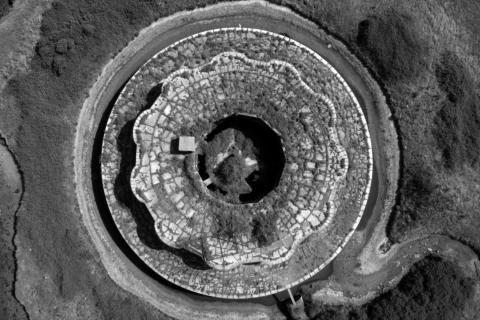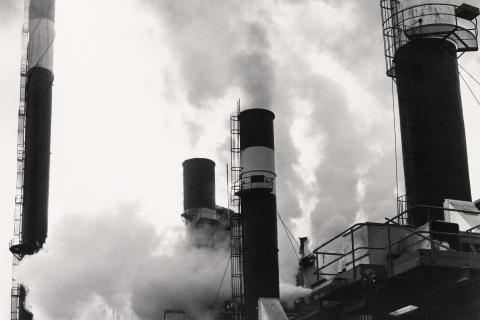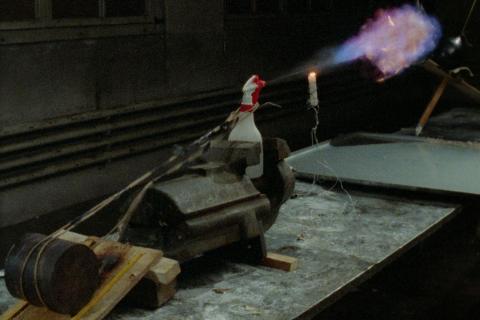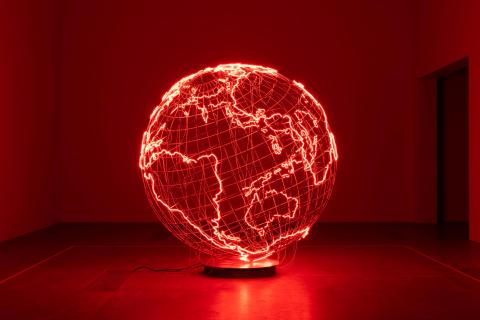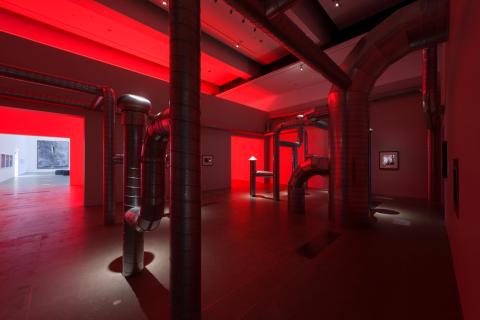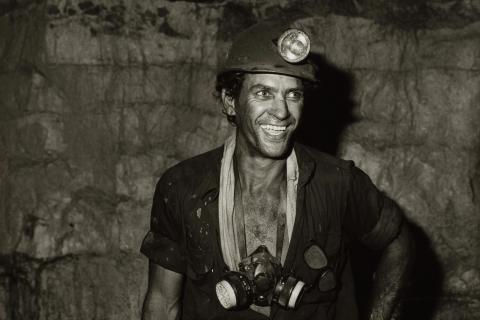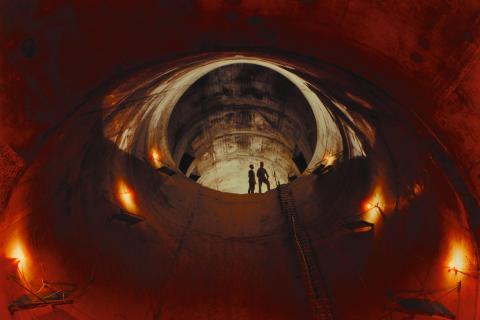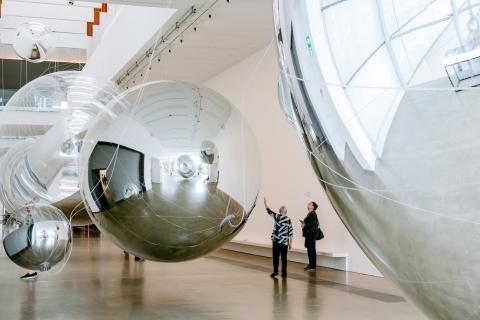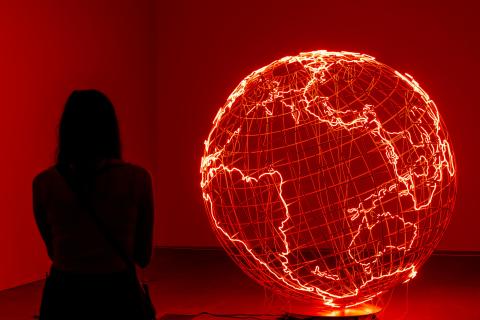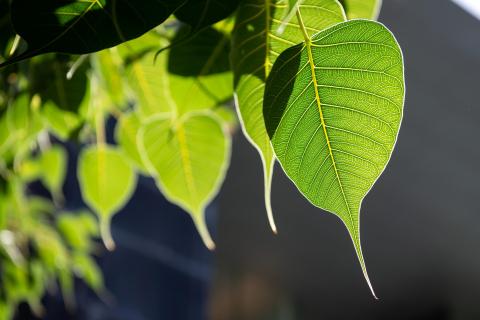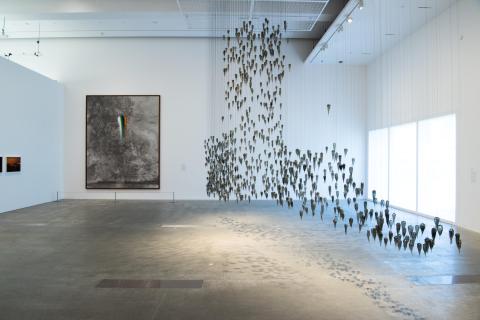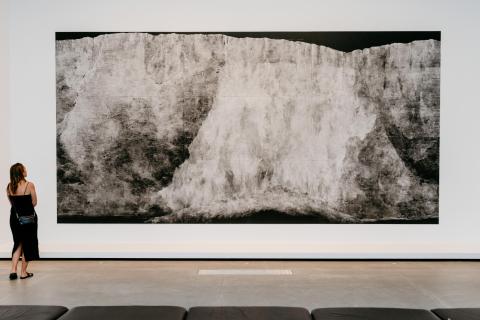AIR: Burn
We are usually unaware of the air we breathe, but might sense it when standing near an air vent. Nancy Holt draws our attention to the movement of air in her work Ventilation System 1985–1992/2022. COVID-19 alerted us to the capacity of air to convey invisible threats and heightened our awareness of the connected systems we depend on. In attempting to halt the virus our global supply chains and deep reliance on one another became apparent.
Iraqi-British artist Jananne Al-Ani traces these relationships in her 2016 film Black Powder Peninsula. A rising aerial perspective links oil and gas storage depots, sewage processing plants and power stations. Such systems are challenging to rewire. What role can the energy, imagination and labour of any one individual play as we seek to galvanise change? Charles Page, Max Dupain and Wolfgang Sievers convey a sense of human capacity, which oscillates between wonder and unease when faced by the scale of mining, construction and industry.
Mona Hatoum sounds an alarm in Hot Spot 2006. Her sculpture takes the shape of the Earth, the perimeter of each continent burning in orange-red neon. Hatoum highlights our proximity to unrest and the impact of conflict, as if predicting the systems we rely on are about to overheat and malfunction.
We designed these networks to encompass the globe, but can we foresee the linked cascade of effects we have set in motion? In The Way Things Go (Der Lauf der Dinge) 1987, Peter Fischli and David Weiss set up a domino-like flow of experiments where one movement or process leads to another. Their film models not only aspects of how we got here but also the spirit of experimental play required to engineer a better future.
Feature image: Mona Hatoum’s Hot Spot 2006 installed at GOMA for ‘Air’, March 2023 / Courtesy: The Roberts Institute of Art, London / © Mona Hatoum / Photograph: J Ruckli, QAGOMA
